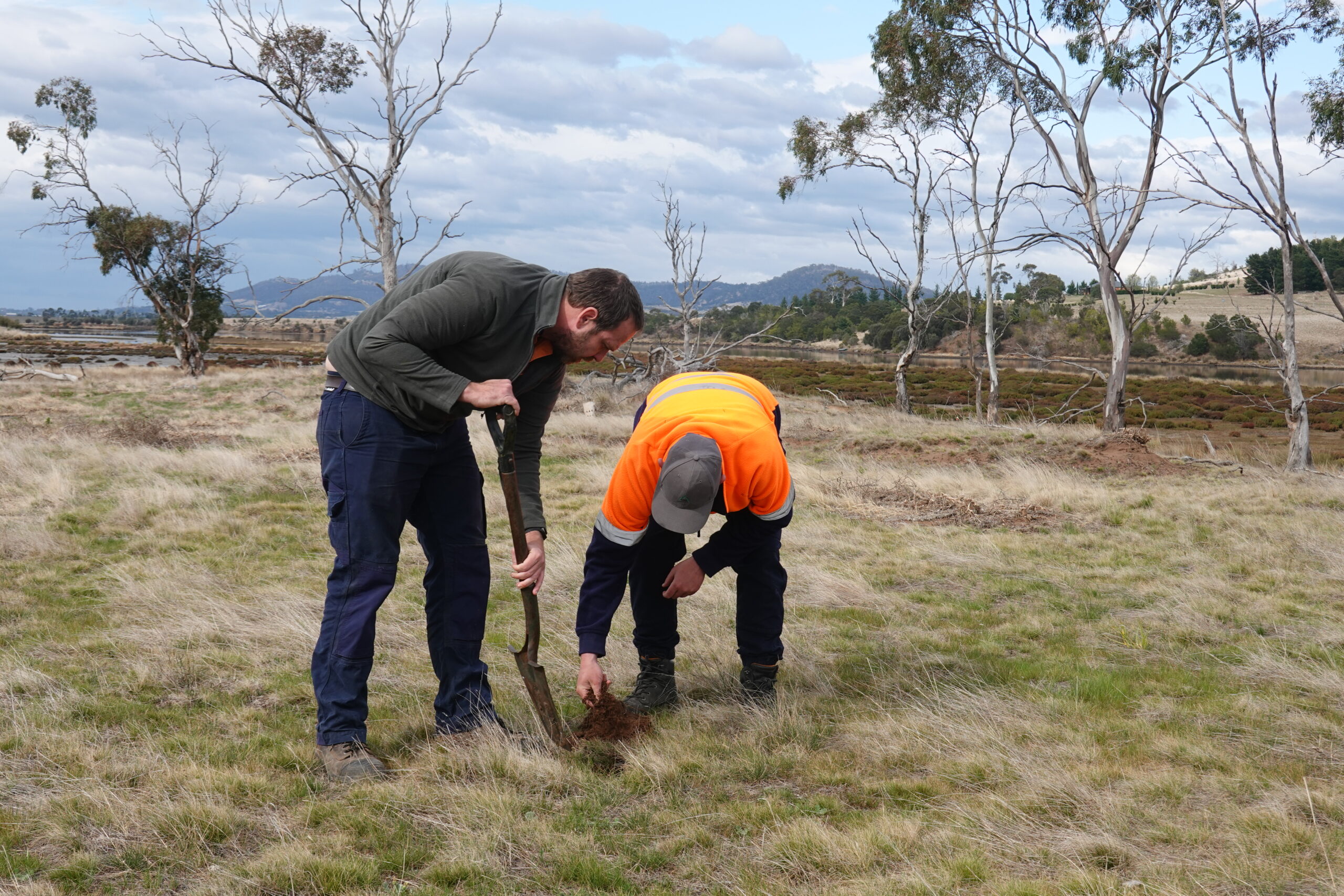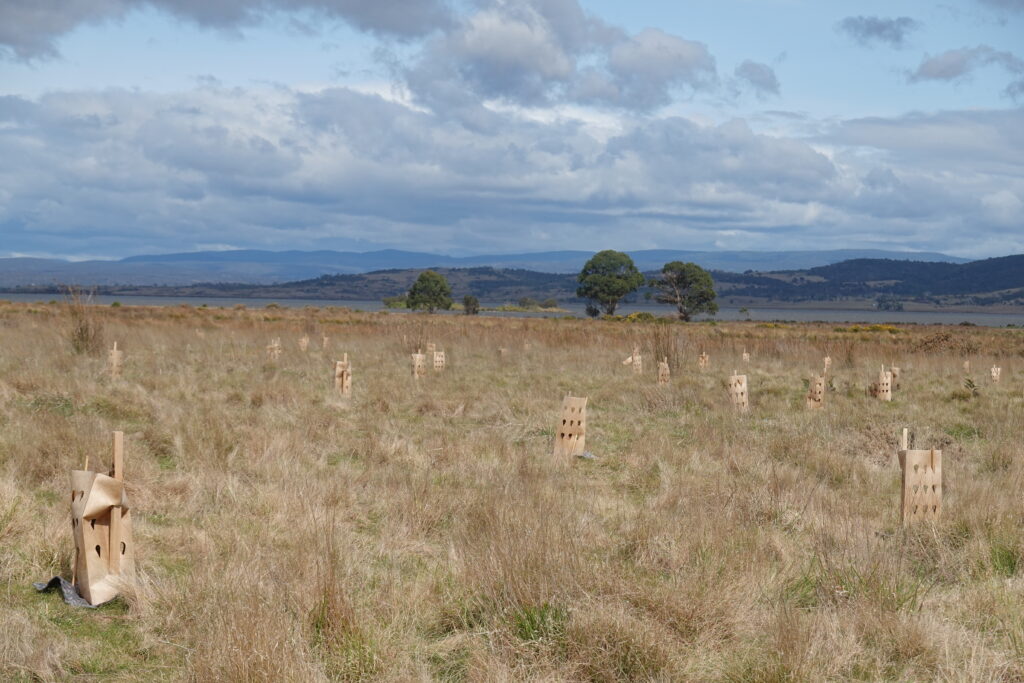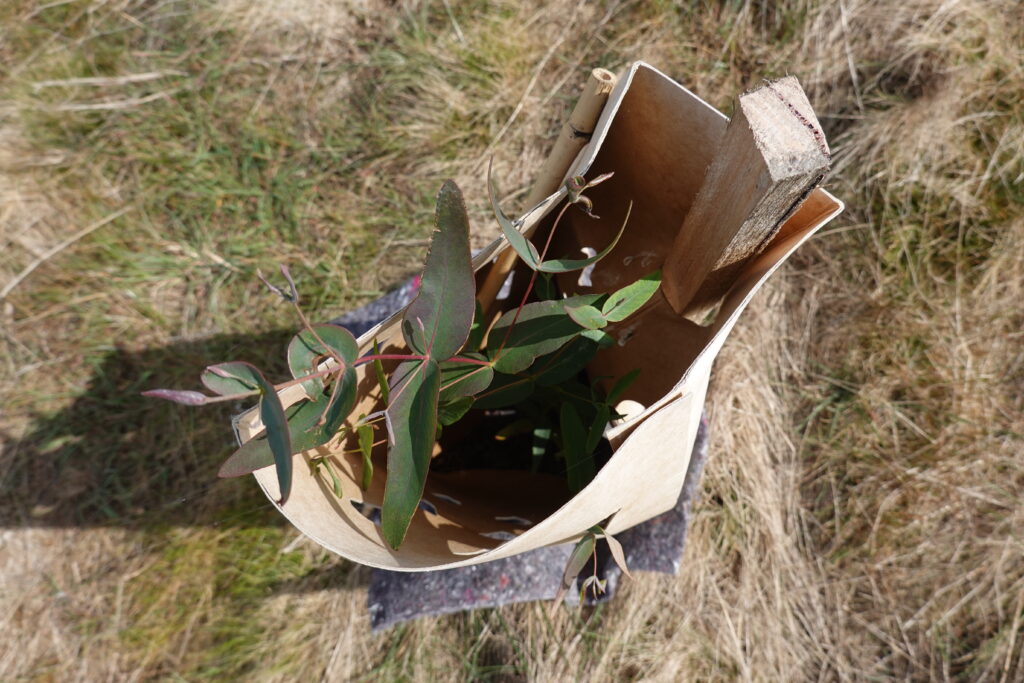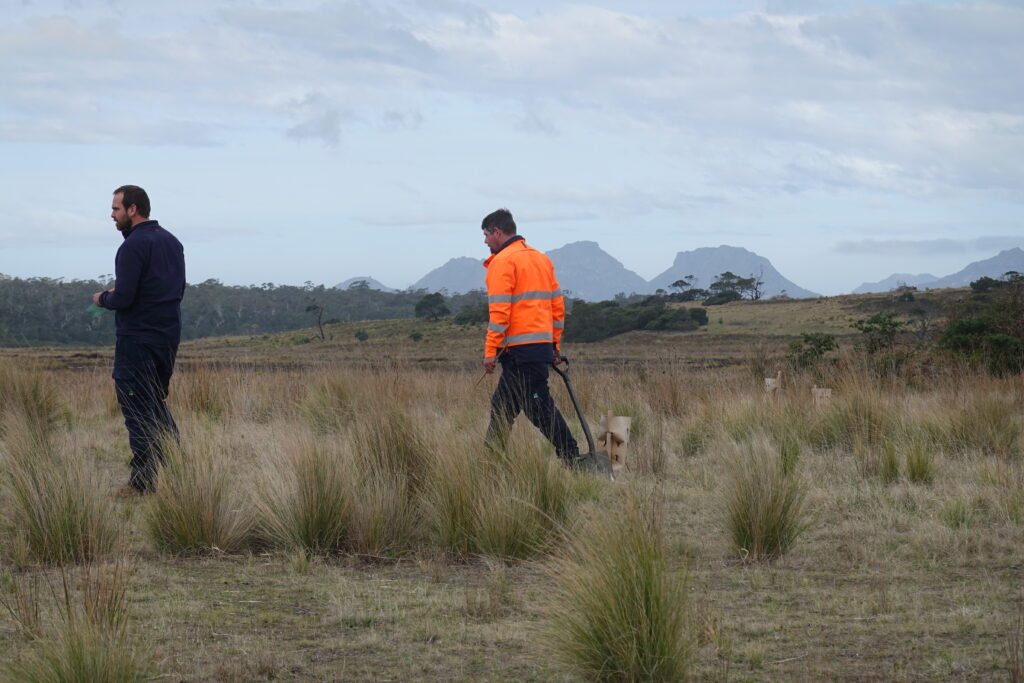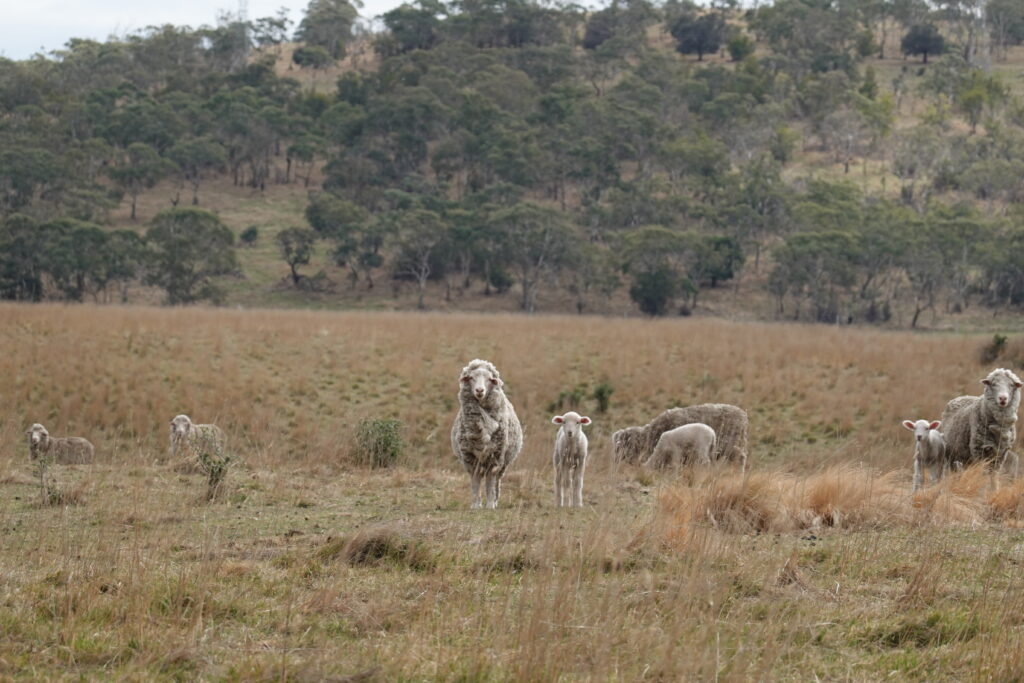With the return of another spring season, staff from our Water team recently visited two of our saltmarsh restoration projects to check on the progress of our revegetation efforts. Across the two Ramsar-listed wetlands, NRM South coordinated plantings across 67 ha of private land surrounding Moulting Lagoon and Apsley Marshes, and 7.5 ha of private land adjacent to Pitt Water-Orielton Lagoon.
Locally native plants replanted across both sites included coast flax-lily, Tasmanian blue gum and drooping sheoak, as well as a mix of tussock and grass species.
While both projects officially wrapped up in June, we are continuing to monitor the condition of the growing plants and carry out any necessary maintenance including watering and infill planting.
The long-term success of revegetation projects is often hampered due to a lack of follow up care. Young plants may struggle during dry or hot periods, plant guards may become damaged or the planting site may become overgrown with weeds. Revegetation monitoring is, therefore, vital to ensuring our efforts translate to effective results and is also a great chance to witness these landscapes begin to recover. Overall, staff noted that the current condition of the revegetation varies within and between the sites, but that there has been fair survival and growth.
The Moulting Lagoon and Apsley Marshes project was supported by NRM South though funding from the Australian Government’s National Landcare Program. The Pitt Water-Orielton Lagoon project was supported by NRM South though funding from the Australian Government’s Fisheries Habitat Restoration Program. NRM South will conduct additional restoration works at Pitt Water-Orielton Lagoon until March 2025, through funding from the Australian Government’s Blue Carbon Ecosystem Restoration Grants.
All images: Grace Isdale
